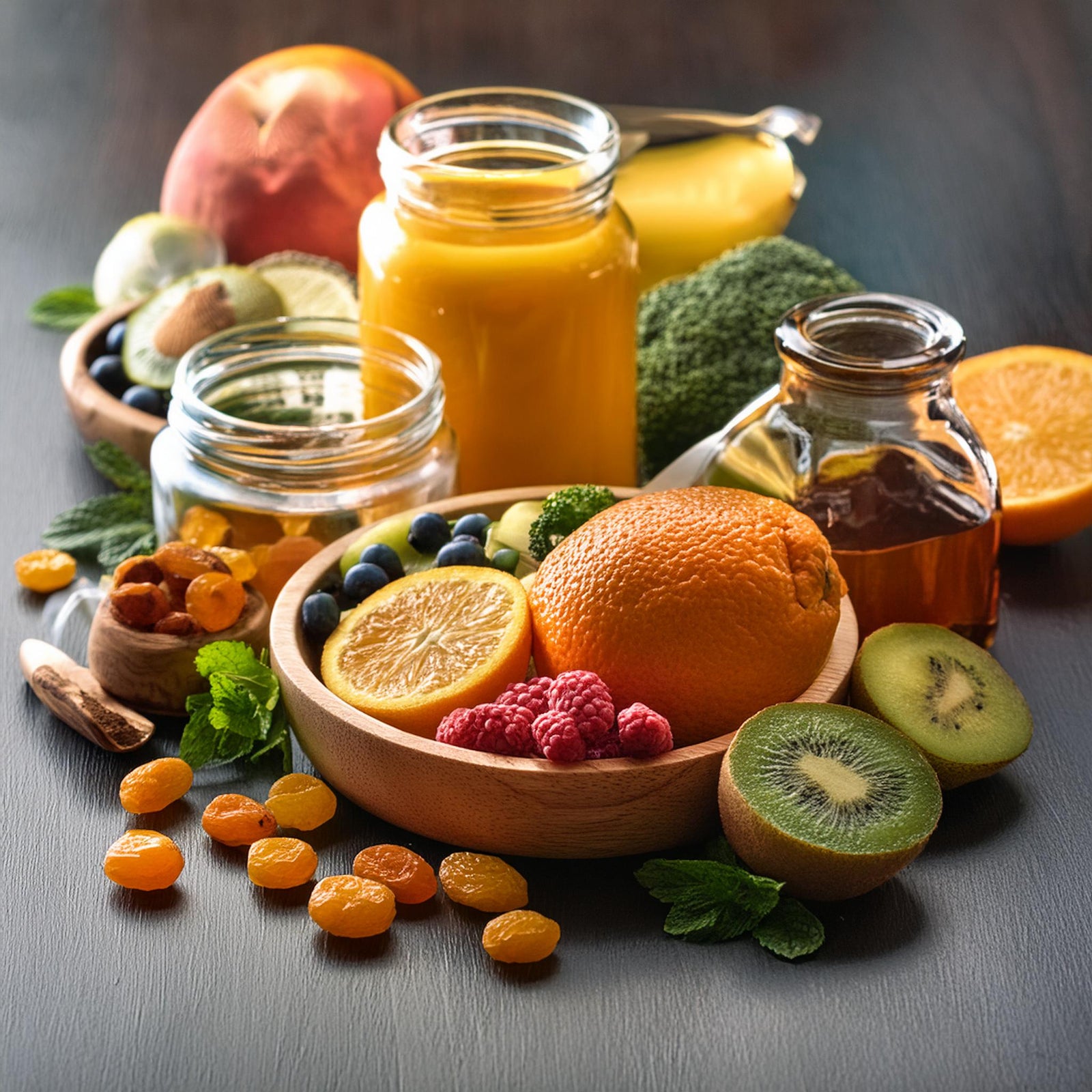The daily needs for vitamins and minerals can vary based on age, sex, life stage (such as pregnancy), and overall health. Below are the Recommended Dietary Allowances (RDAs) and Adequate Intakes (AIs) for an average adult male and female, based on guidelines from the National Institutes of Health (NIH):
Vitamins:
-
Vitamin A:
- Males: 900 mcg
- Females: 700 mcg
-
Vitamin C:
- Males: 90 mg
- Females: 75 mg
- Vitamin D: 600 IU (15 mcg)
- Vitamin E: 15 mg
-
Vitamin K:
- Males: 120 mcg
- Females: 90 mcg
- Folate: 400 mcg
- Vitamin B12: 2.4 mcg
Minerals:
-
Calcium:
- Adults: 1,000 mg
- Women over 50 and men over 70: 1,200 mg
-
Iron:
- Males: 8 mg
- Females: 18 mg
-
Magnesium:
- Males: 400-420 mg
- Females: 310-320 mg
- Phosphorus: 700 mg
- Potassium: 2,500-3,000 mg
- Sodium: Less than 2,300 mg
-
Zinc:
- Males: 11 mg
- Females: 8 mg
Notes:
- Vitamin needs: Pregnant and lactating women have higher requirements for certain vitamins and minerals.
- Vitamin D: Sun exposure can affect how much you need from dietary sources.
- Sodium and potassium: Balancing these minerals is crucial for maintaining healthy blood pressure.
These values are generalized and can vary based on specific health conditions and recommendations by healthcare providers.
If we compare it with for example Red Cabbage microgreens
Vitamin and Mineral Content in 100 g of Red Cabbage Microgreens vs. RDA for Adult Male:
Vitamins:
-
Vitamin A (as beta-carotene):
- Microgreens: 3,150 IU (945 mcg)
- RDA: 900 mcg
- Percentage of RDA: 105%
-
Vitamin C:
- Microgreens: 147 mg
- RDA: 90 mg
- Percentage of RDA: 163%
-
Vitamin E:
- Microgreens: 2.1 mg
- RDA: 15 mg
- Percentage of RDA: 14%
-
Vitamin K:
- Microgreens: 410 mcg
- RDA: 120 mcg
- Percentage of RDA: 342%
-
Folate:
- Microgreens: 52 mcg
- RDA: 400 mcg
- Percentage of RDA: 13%
Minerals:
-
Calcium:
- Microgreens: 190 mg
- RDA: 1,000 mg
- Percentage of RDA: 19%
-
Iron:
- Microgreens: 2.4 mg
- RDA: 8 mg
- Percentage of RDA: 30%
-
Magnesium:
- Microgreens: 45 mg
- RDA: 400-420 mg
- Percentage of RDA: 11%
-
Phosphorus:
- Microgreens: 92 mg
- RDA: 700 mg
- Percentage of RDA: 13%
-
Potassium:
- Microgreens: 550 mg
- RDA: 2,500-3,000 mg
- Percentage of RDA: 18-22%
-
Sodium:
- Microgreens: 65 mg
- RDA: Less than 2,300 mg
- Percentage of RDA: Less than 3%
-
Zinc:
- Microgreens: 0.92 mg
- RDA: 11 mg
- Percentage of RDA: 8%
Summary:
Red cabbage microgreens are particularly rich in vitamins A, C, and K. They provide significant portions of the RDAs for these vitamins, especially vitamin K. They also offer a good amount of calcium and iron, contributing to a substantial portion of the daily needs. While they are not exceptionally high in some minerals like magnesium, phosphorus, and zinc, they still contribute meaningfully to the daily intake. Including red cabbage microgreens in your diet can help boost your overall nutrient intake, complementing other sources to meet daily requirements.
Text is generated with ChatGPT 4.0 and should not be taken as hard facts.

